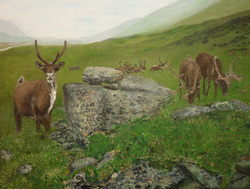
I aspire to natural realism in my paintings, so my landscapes and animal paintings are based on my own experiences. This is the story behind my picture "Safe Passage".
In July 2009 I flew from Coldfoot, Alaska into Gates of the Arctic National Park with my colleague and friend Thomas Liebscher, the park's Chief of Resources. We chartered a small plane to take us deep into the park, which, at 8.4 million acres and above the Arctic Circle, is one of the largest and most northerly wilderness areas in the United States. Our plane was equipped with fat balloon tires to land us on a gravel bar on the flood plain of the Okimilaga or Chandler River, where we unloaded our camping gear and searched for a suitable place to pitch tent.
In July 2009 I flew from Coldfoot, Alaska into Gates of the Arctic National Park with my colleague and friend Thomas Liebscher, the park's Chief of Resources. We chartered a small plane to take us deep into the park, which, at 8.4 million acres and above the Arctic Circle, is one of the largest and most northerly wilderness areas in the United States. Our plane was equipped with fat balloon tires to land us on a gravel bar on the flood plain of the Okimilaga or Chandler River, where we unloaded our camping gear and searched for a suitable place to pitch tent.
We knew that less than a year before, on August 28, 2008, a lone grizzly bear had attacked one of a group of campers in her tent at this spot, so we were especially careful to follow safe practices for camping in bear country. We set up camp with our tents close to each other and with cooking and food storage areas (in bear resistant canisters) well separated. We also surrounded our tents with a portable battery-powered electric fence, and kept cans of pepper spray, a firearm, and communication devices close at hand at all times, in case of emergency. Alaska's summer midnight sun makes it hard for me to sleep, and this location's history didn't help, but the wind and gentle ticking of the fence charger put my mind at ease, and I woke refreshed.
In the morning I walked a short distance to the edge of our camp, where I found several fresh sets of tracks left in the mud of the receding river, including multiple caribou tracks, one grizzly bear, and both were overlain by the tracks of several wolves, vivid reminders of the wilderness around us.
The caribou had started their seasonal migration and we were treated to the sight of many groups of a few to 50 or more caribou. Reindeer are domesticated from caribou. We hiked for several miles through the day, along lateral glacial moraines and the river's winding channel.
I noticed a cluster of large boulders on the hill slope, so I hiked up for a better view of the caribou as they passed by. Above our camp, I found a depression adjacent to a large boulder and just deep enough for me to kneel down below ground level.
It was only a few minutes before a small group of caribou crested the hill, stopped a few feet away from me, and began to graze. The wind was blowing towards me, so my scent would not spook them.
As I looked around me, I came to realize that there were no less than a dozen similarly good viewing spots in close proximity, several of which had low stacks of boulders that afforded sheltered vantage points. That's when I realized that these were not glacial erratics, but rather were blinds that been carefully positioned to conceal Native hunters long ago.
Among the lichen covered rocks were many small fragments of chert, but there were no bullet casings to be found that day. Some archeological sites in this national park have been dated to 4,000-10,000 years old.
How long had my viewing spot been used for spying on migrating animals? It's hard to say, but at least today the caribou had safe passage.
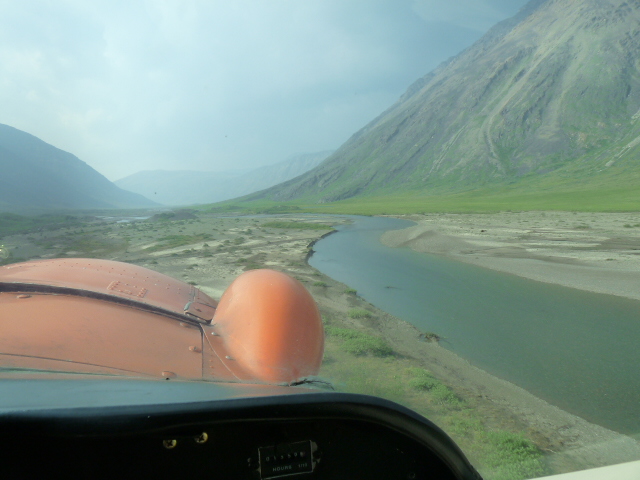
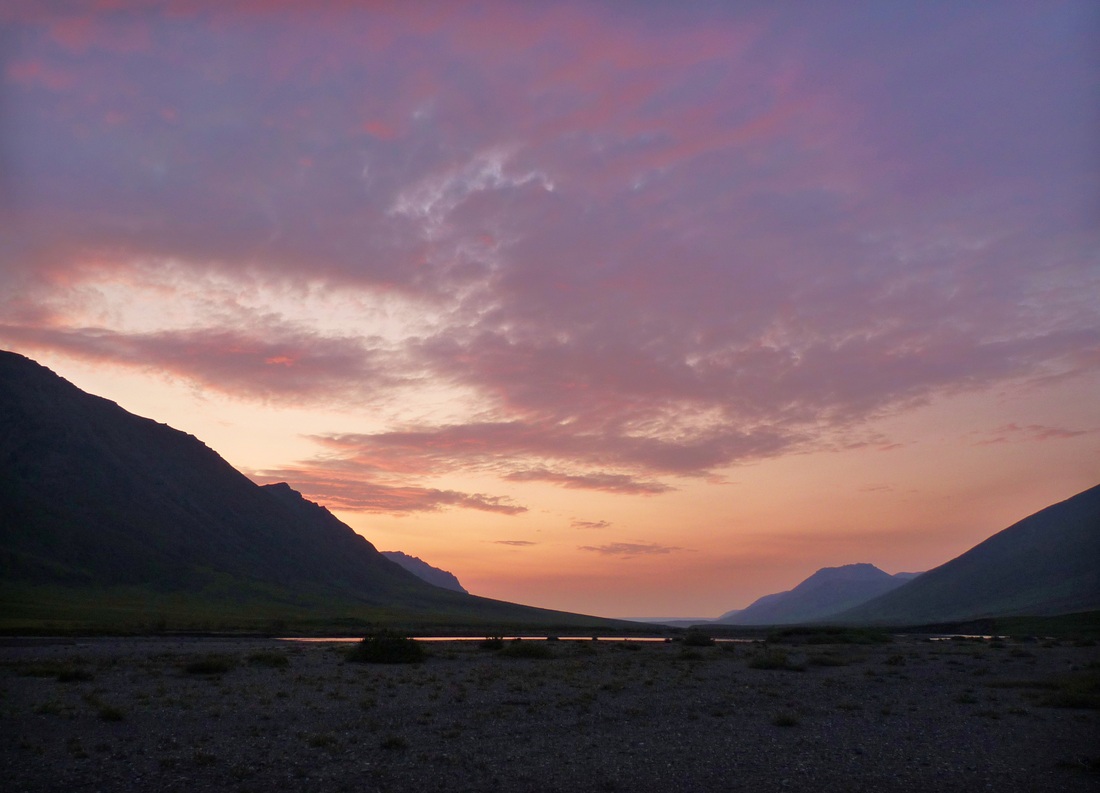
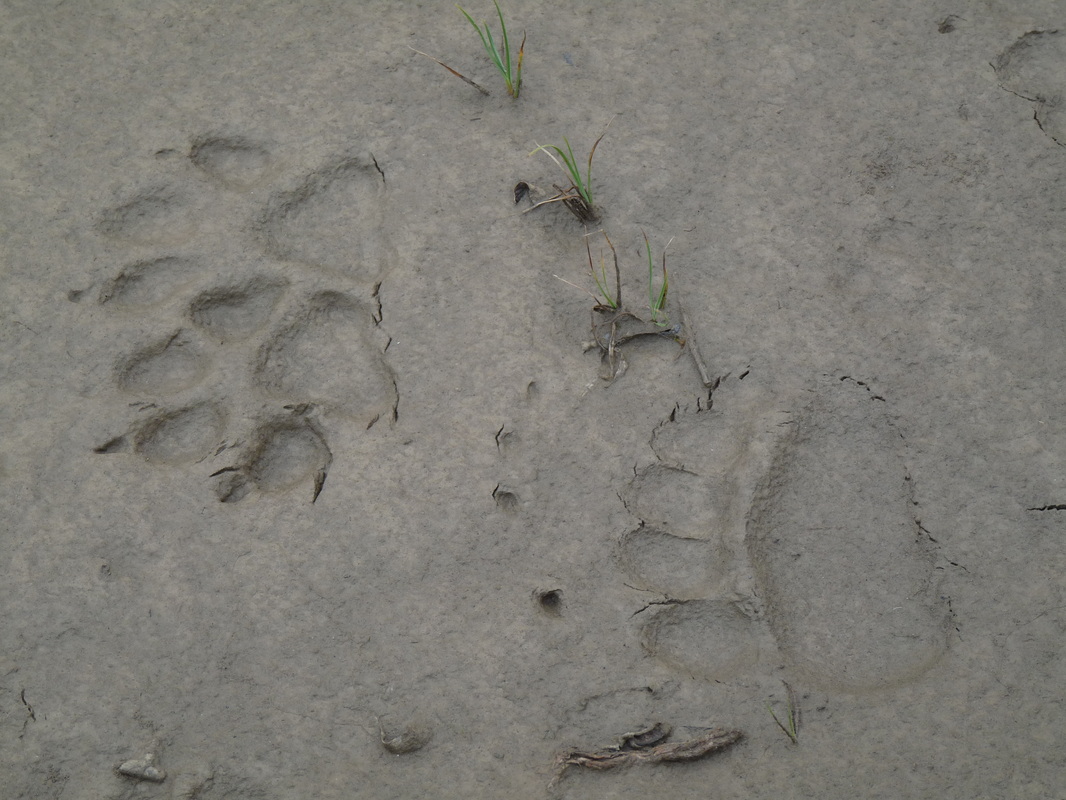
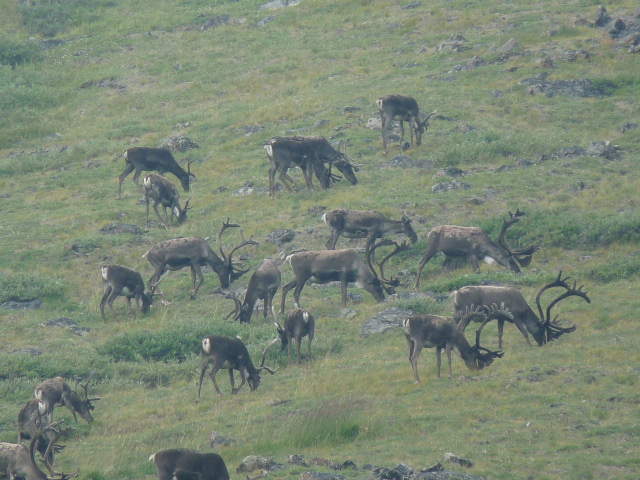
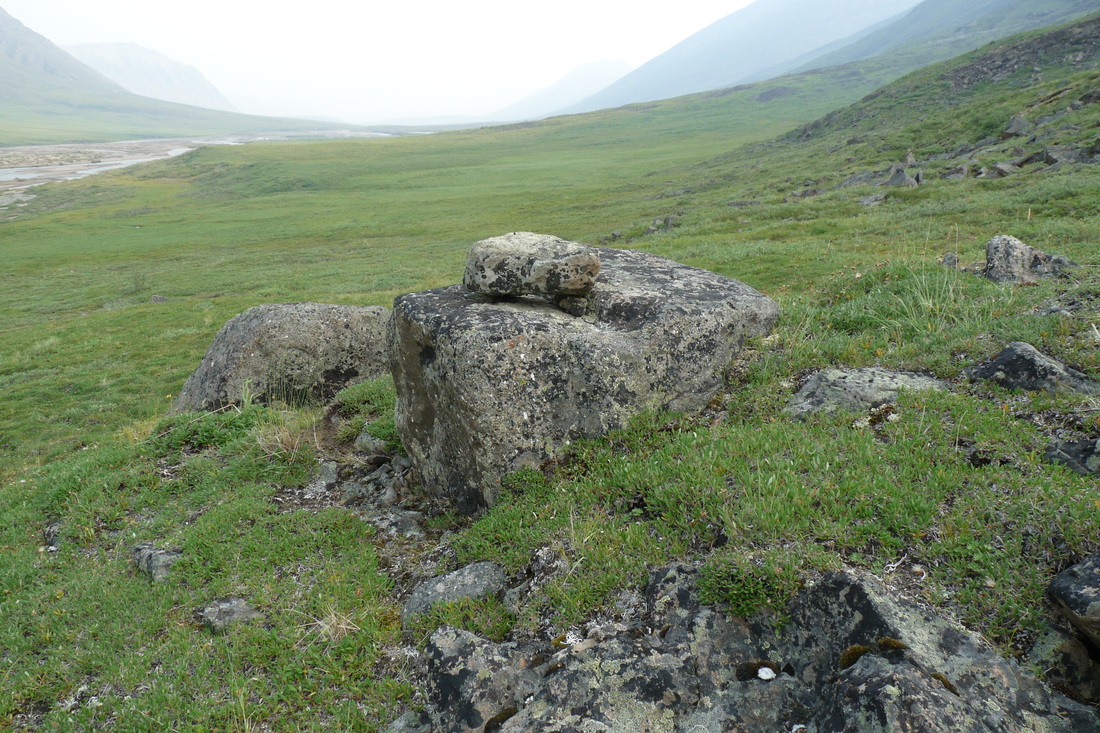
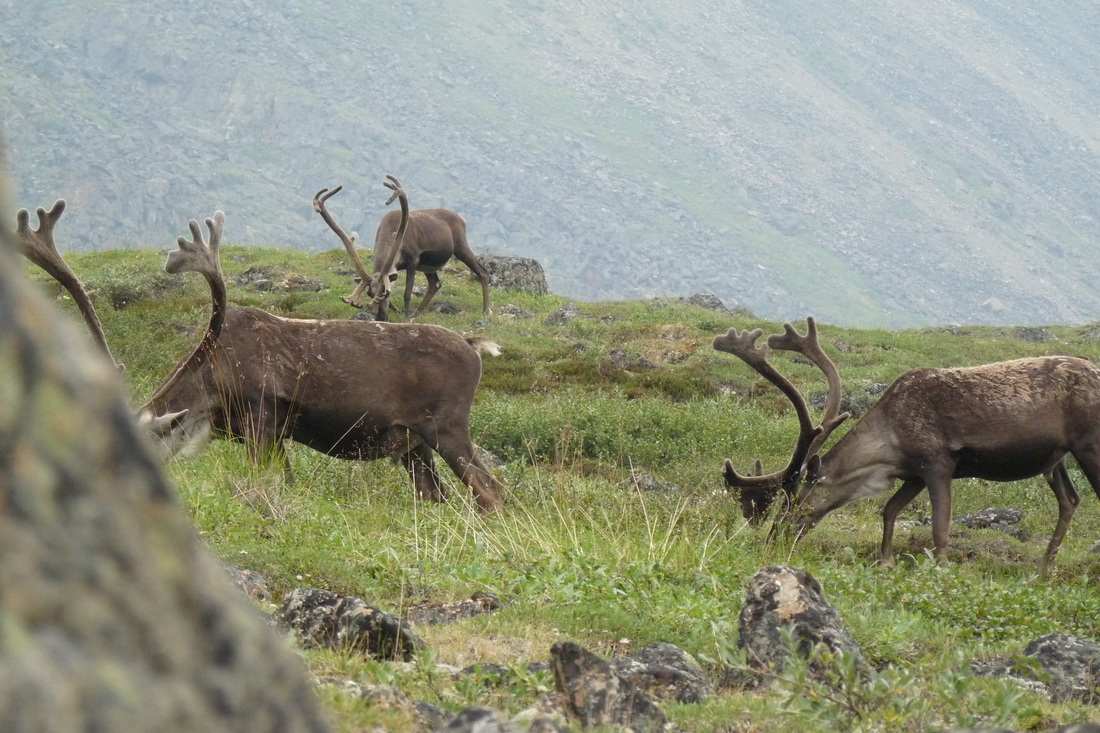
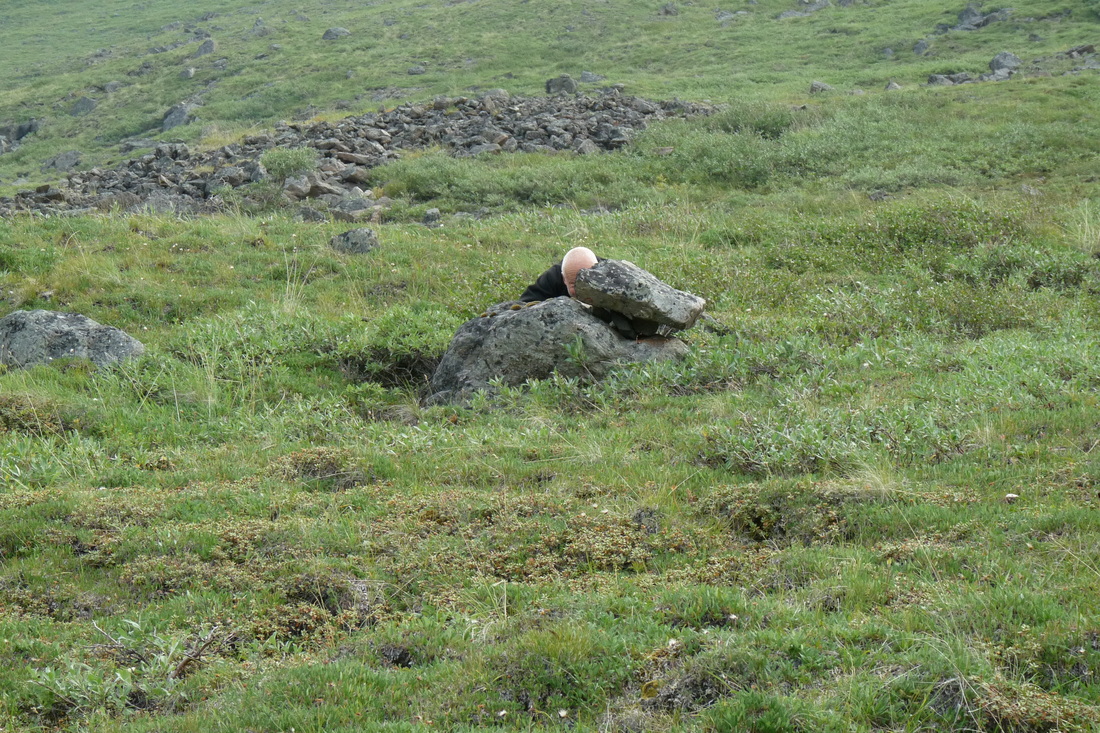
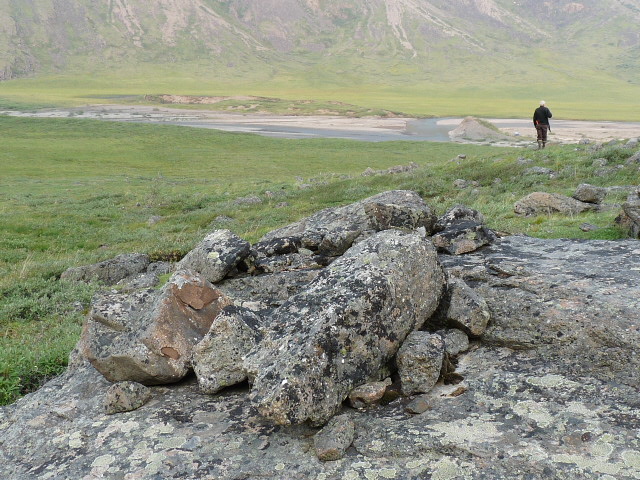
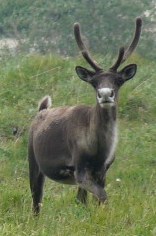
 RSS Feed
RSS Feed